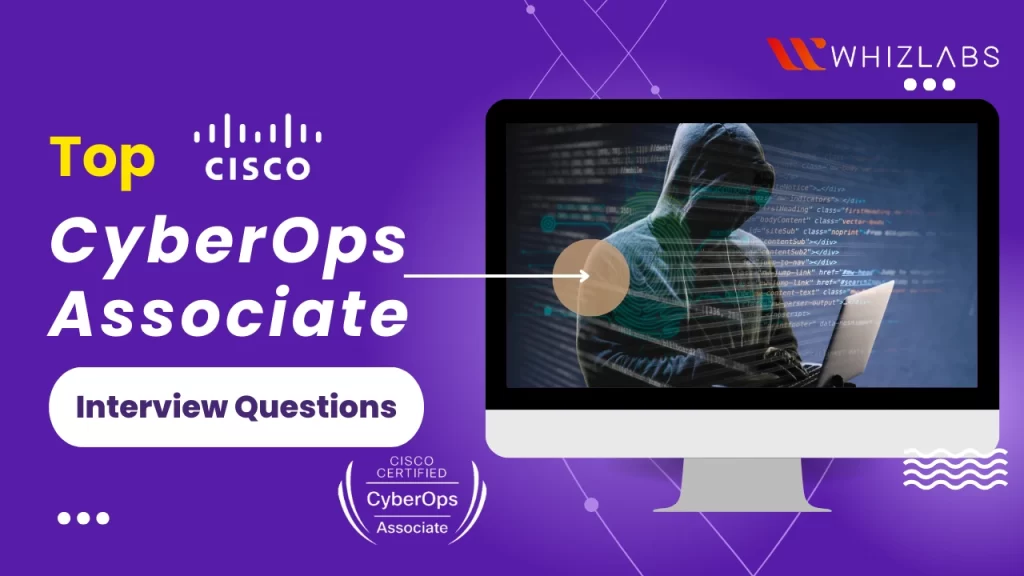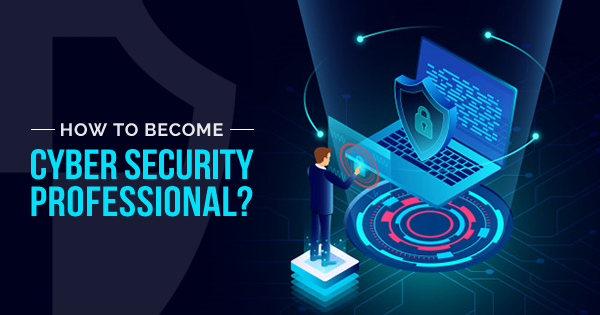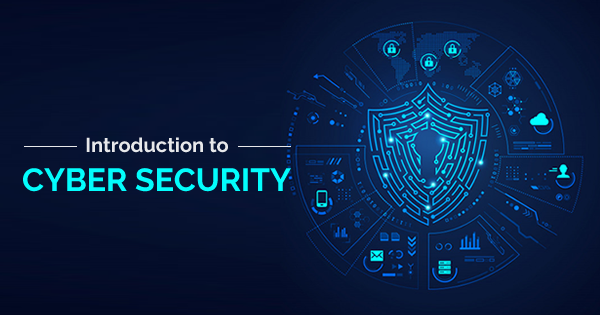If you’re gearing up for a career in cybersecurity and aiming to achieve the prestigious Cisco Certified CyberOps Associate certification, you’re on the right track.
The Cisco Certified CyberOps Associate 200-201 certification exam focuses on your knowledge of associate-level cyber operations including security concepts, security monitoring, host-based analysis, network intrusion analysis, and security policies and procedures.
To help you ace your upcoming interview and gain deeper insights into the world of cyber defense, we’ve compiled the top Cisco Certified CyberOps Associate 200-201 certification interview questions that will sharpen your knowledge and readiness for the journey ahead.
Let’s dive in!
Top 15 Cisco Certified CyberOps Associate Interview Questions
Here we have listed out the important Cisco Certified Cyberops Associate Interview questions for you:
1. What is the CIA Triad?
The CIA Triad is a fundamental concept in information security. The “CIA triad” is an acronym representing the three pillars of information security: Confidentiality, Integrity, and Availability. This triad serves as a fundamental blueprint for shaping robust security systems, acting as a compass for identifying weaknesses and devising effective remedies in the realm of cybersecurity.
Let’s see these terms in detail:
- Confidentiality: Ensuring that data is only accessible to authorized individuals or systems.
- Integrity: It guarantees the accuracy and reliability of data by protecting it from unauthorized alterations.
- Availability: Making sure that data and resources are accessible and available when needed.
2. What is Endpoint Security?
Endpoint security is a cybersecurity approach focused on protecting individual devices (endpoints), such as computers, smartphones, and servers, from security threats. It involves safeguarding these endpoints with measures like antivirus software, firewalls, and intrusion detection systems.
Key benefits of endpoint security:
- Safeguarding the Entry Points: Endpoints serve as the initial gateways for cyberattacks. Ensuring their security is like fortifying your castle’s main gate to ward off malware, data breaches, and unauthorized intruders.
- Adapting to Remote Work and Mobility: The battleground has expanded in our modern landscape, where remote work and mobile devices rule. Endpoint security stands guard, guaranteeing that all devices connecting to your corporate realm are secure, no matter where they roam.
- Shielding Sensitive Data: With the power of endpoint security, you can cloak your valuable data in encryption and access controls. This way, even if a device is lost or stolen, your secrets remain safe from prying eyes.
- Countering Ransomware Threats: Ransomware is a menacing foe, often targeting endpoints with file-snatching tactics. Endpoint security becomes your trusty shield, detecting and fending off these attacks to pay the ransom.
- Meeting Compliance Standards: Various industry regulations and data protection laws, like GDPR and HIPAA, mandate the implementation of endpoint security.
- Aiding in Crisis Response: Endpoint security solutions equipped with EDR capabilities act like trusty scouts, providing valuable intelligence during threat incidents. They offer insights and data for crafting swift responses and tracking down threats.
3. What are Risk, Threat, Vulnerability, and Exploit?
- Risk: It is the potential for loss or harm to an organization’s assets due to a threat exploiting a vulnerability. It’s often calculated as the likelihood of a threat occurring multiplied by the impact it would have.
- Threat: It refers to any potential danger that can exploit a vulnerability to cause harm to a system or organization. Threats can be natural, human-made, or environmental.
- Vulnerability: Weaknesses or flaws in a system that could be exploited by threats to compromise security.
- Exploit: An exploit is a piece of code or an action that takes advantage of a vulnerability in a system to perform unauthorized actions.
4. What are Social Engineering Attacks?
Social engineering attacks are manipulative tactics used to deceive individuals into divulging sensitive information or performing actions that compromise security. Examples include phishing, pretexting, baiting, and tailgating.
The intruders may employ phone, email, spam mail, or direct contact to gain illegal access. Phishing and CEO Fraud are all examples of social engineering attacks.
5. What is Host-Based Analysis?
Host-based analysis involves examining the security of an individual computer or host. It typically includes activities like monitoring system logs, examining files and configurations, and checking for signs of malware or unauthorized access.
6. Explain the differences between Network-Based and Host-Based Intrusion Detection Systems (NIDS and HIDS).
- Network-Based Intrusion Detection System (NIDS): NIDS monitors network traffic for suspicious activities or known attack patterns. It focuses on detecting threats at the network level and does not require software on individual hosts.
- Host-Based Intrusion Detection System (HIDS): HIDS resides on individual hosts and monitors their activities. It’s designed to detect intrusions or abnormal behavior on a specific system, including unauthorized access or changes to system files.
Here’s the comparison between the Network-Based and Host-Based Intrusion Detection Systems:
| Category | HIDS (Host Intrusion Detection System) | NIDS (Network Intrusion Detection System) |
| Definition | Monitors a single host or computer. | Monitors the entire network and its traffic. |
| Type | Doesn’t work in real-time | Operates in real-time |
| Concern | Focused on threats related to the host system. | Examines activities and traffic across the network. |
| Installation Point | Installed on individual computers or servers. | Typically installed at network intersection points. |
| Execution Process | Compares system status snapshots, resulting in a delay. | Examines data flow in real-time and reports anomalies. |
| Information about Attack | Informed about attacks related to system files and processes. | Less informed due to the complexity and scale of the network. |
| Ease of Installation | Installation on multiple hosts can be cumbersome. | Fewer installation points make it easier to deploy. |
| Response Time | Slower response time. | Fast response time. |
7. Explain the Role of Access Control Mechanisms in Securing Networks and Systems.
Access control mechanisms regulate who can access and interact with systems and networks. They include authentication (verifying user identity), authorization (defining what actions a user is allowed to perform), and audit logging (tracking and recording user activities). These mechanisms play a crucial role in safeguarding systems and data from unauthorized access.
8. What are Some Common Encryption Protocols Used to Secure Data in Transit?
Common encryption protocols for securing data in transit include:
- SSL/TLS (for web traffic): TLS refers to a set of industry-based cryptographic protocols used for data encryption that is exchanged over the network
- SSH (for secure remote access): It is a method for securing remote login from one computer to another. It offers alternative options for authentication, and it secures communication and integrity with the help of strong encryption.
- IPsec (for virtual private networks or VPNs): Internet Protocol Security (IPsec) refers to network protocol suite and secure communications that takes place between the two devices over IP networks. It is primarily used on the public internet.
These protocols encrypt data during transmission, making it unreadable to unauthorized parties.
9. Describe the Concept of Defense in Depth.
Defense in depth is a cybersecurity strategy that involves using multiple layers of security controls to protect an organization’s assets. This approach aims to provide redundancy and resilience, ensuring that if one layer fails, others remain in place to defend against threats.
Some of the elements of defense in depth such as Network Security Controls, Antivirus Software, Behavioral Analysis, and data integrity analysis.
10. What is a SIEM and a SOAR?
- SIEM (Security Information and Event Management): SIEM is a system that collects, aggregates, and analyzes security data from various sources (such as logs and alerts) to provide comprehensive visibility into an organization’s security posture. It helps detect and respond to security incidents.
- SOAR (Security Orchestration, Automation, and Response): SOAR is a technology solution that automates and streamlines security incident response and management. It combines orchestration and automation to handle security alerts and incidents more efficiently, reducing response times and improving overall security operations.
11. What is a 5-tuple approach?
A 5-tuple refers to a collection of five distinct values that together define a Transmission Control Protocol/Internet Protocol (TCP/IP) connection. These values encompass the source IP address and port number, the destination IP address and port number, and the specific protocol for the connection.
Also Read : Free Questions on Cisco Certified CyberOps Associate
12. What is the difference between rule-based detection and statistical detection?
Rule-based detection works based on predetermined rules and patterns to predict the attack type. At the same time, machine learning employs statistical algorithms and models to find patterns and detect anomalies. It means Statistical detection defines legitimate data over a certain period.
13. What is threat intelligence?
Threat intelligence also known as cyber threat intelligence or ‘threat intel, ’ refers to data that contains detailed information about the cybersecurity threats emerging in an organization. It helps the security teams to be more proactive thus making them take effective actions to prevent the cyber attacks before they evolve. It also helps an organization to detect and respond to cyberattacks.
Security analysts craft threat intelligence by collecting the raw threat data and security-related data from varied sources, and then correlation and data analysis processes are carried out to uncover trends, patterns, and relationships that offer an in-depth understanding of the actual threats.
14. What are the primary responsibilities of a Security Operations Analyst?
The primary responsibilities of SOC analysts such as to identify, investigate, and escalate alerts and events to protect sensitive data from unauthorized access or harm that are exploited by cybercriminals or malicious insiders.
They offer technical, administrative, and procedural support for the organization’s information security program to protect the CIA from information
systems.
15. What is SecOps?
SecOps, short for Security Operations includes the integration of internal information security and IT operations practices within a business to enhance cooperation and minimize risks. It comprises a range of processes within a Security Operations Center (SOC) aimed at enhancing an organization’s security posture. Traditionally, many businesses have managed security and IT operations separately, each handled by distinct organizations employing different methods and techniques.
Read More : Cisco Certified CyberOps Associate: Study Guide
Conclusion
As you wrap up your journey through these Cisco Certified CyberOps Associate interview questions, you’re now armed with a deeper understanding of the knowledge and expertise required for success in the field of cybersecurity.
When you are preparing for 200-201 CBROPS Certification, you can opt for Cisco CyberOps Associate exam questions to get familiarized with the concepts. You can also make use of Cisco Certified Cyberops Associate free questions available online.
To make your hands dirty by engaging in hands-on experience, we have hands-on labs and sandboxes to dive into the cybersecurity world.
- Top 25 AWS Data Engineer Interview Questions and Answers - May 11, 2024
- What is Azure Synapse Analytics? - April 26, 2024
- AZ-900: Azure Fundamentals Certification Exam Updates - April 26, 2024
- Exam Tips for AWS Data Engineer Associate Certification - April 19, 2024
- Maximizing Cloud Security with AWS Identity and Access Management - April 18, 2024
- A Deep Dive into Google Cloud Database Options - April 16, 2024
- GCP Cloud Engineer vs GCP Cloud Architect: What’s the Difference? - March 22, 2024
- 7 Ways to Double Your Cloud Solutions Architect Role Salary in 12 Months - March 7, 2024



